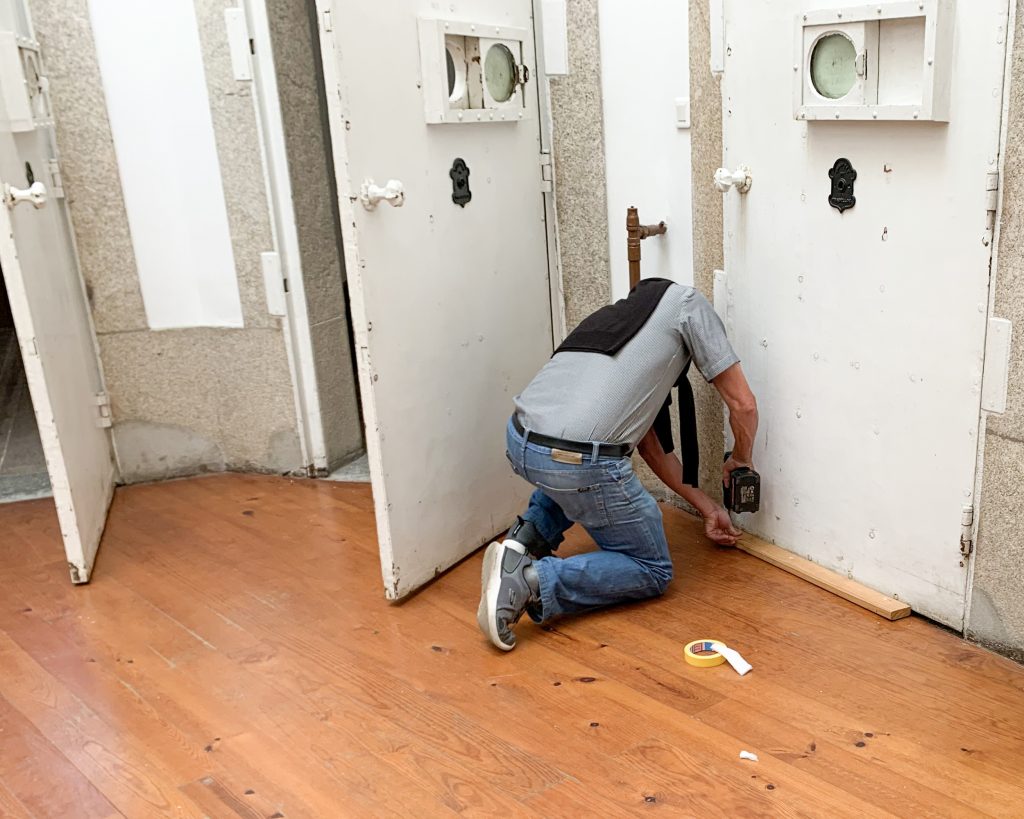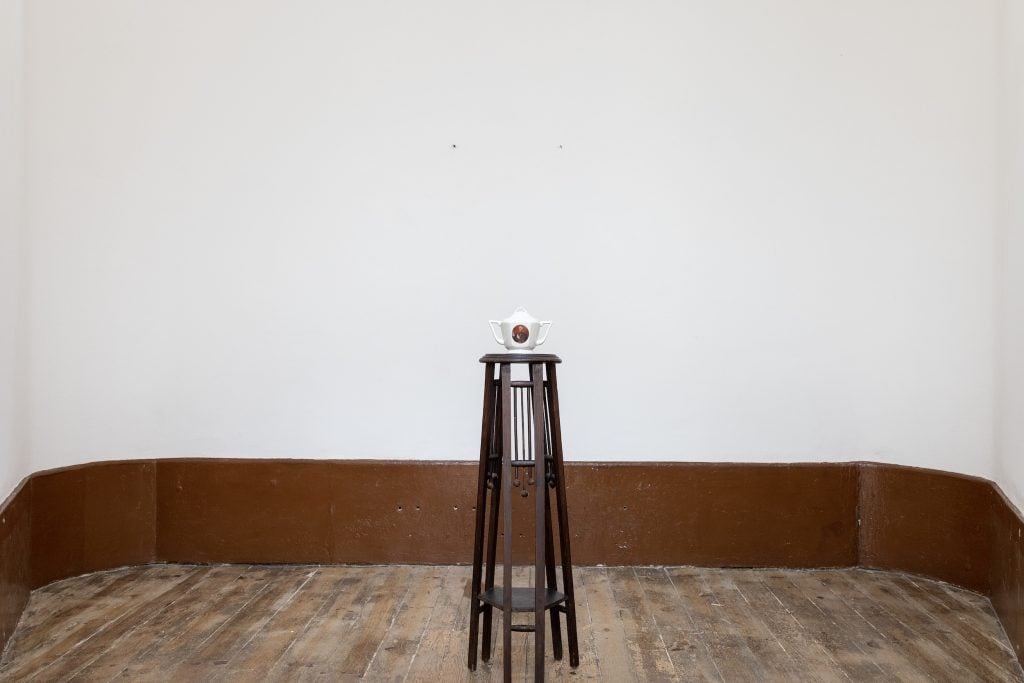Art & Exhibitions
A Portuguese Biennial Staged an Exhibition About the Country’s Legacy of Slavery. Then Its Host Venue Dismantled It
The show by Brazilian artists Dori Nigro and Paulo Pinto was presented across 10 rooms of a psychiatric hospital.

The show by Brazilian artists Dori Nigro and Paulo Pinto was presented across 10 rooms of a psychiatric hospital.

Richard Whiddington

At an exhibition staged by the Porto Photography Biennial in Portugal, visitors have been laying red carnations alongside artworks. The flower is a symbol of democratic liberation in the country and inside the Centro Hospitalar Conde de Ferreira, its presence is a protest against the decision to censor a multimedia exhibition.
“Vento (A)mar,” a site-specific installation by Dori Nigro and Paulo Pinto, is a poetic exploration of the relationship between Brazil and Portugal through the artists’ own family histories. In addition to navigating memory, belonging, and frontiers, it also sought to spark dialogue on Portugal’s slave trafficking legacy inside a hospital bequeathed by a profiteer of the very industry, Conde de Ferreira. The exhibition, located across 10 rooms of psychiatric hospital’s panopticon, succeeded, though not perhaps precisely as the Brazilian artists had intended.
View of Panopticon at the hospital. Photo: courtesy José Sergio.
At the show’s opening on May 20, the hospital banned access to a room exhibiting mirrors etched with words challenging the legacy of Conde de Ferreira, including one that read: “How many enslaved people is a psychiatric hospital worth?” A week later, the room reopened with three works removed — all of which directly referenced the hospital’s founding patron. The work that remained was a sugar bowl with a portrait of Conde de Ferreira sat on a stool.
In a statement, the hospital’s administrative board claimed to have been “affected” by the exhibition’s language, though insisted it remained committed to engaging its history “in an adequate way.”

Room 7 of the panopticon at the Porto Biennial being closed. Photo: courtesy Porto Photography Biennial.
The hospital’s move was unexpected and prompted the Porto Photography Biennial organizers to rapidly gather and come to a decision. Should they pull the show? Insist the censored works be remounted? Or continue with the censored version? The artists, curator Georgia Quintas, and the Biennial’s artistic directors decided to take the latter course staging “Vento (A)mar,” which means both “Wind at Sea” and “Wind to Love,” as altered by the hospital.
“Continuing the exhibition in light of the act of censorship, gives voice to the issues raised in the exhibition,”Virgilio Ferreira and Jayne Dyer, co-artistic directors of the Biennial told Artnet News. “It offers time for reflection and a deeper examination and debate on the silencing of slavery which remains an open wound in Portuguese society.”
The hospital’s censorship, the directors said, only further emphasized the need to offer space for the voices and perspectives of enslaved people and their descendants. “Slavery is embedded in the history of Portugal,” they said, “The exhibition reveals the sensitivity of the issue to recognize and deal with the consequences of this dark period in Portugal’s history.”

After the mirror works were removed from room seven, a sugar bowl with a portrait of Conde de Ferreira remained. Photo: courtesy Porto Photography Biennial.
The artists were taken aback by the hospital’s decision to censor the show, particularly given the accommodation they had received from the institution while setting up. They describe “Vento (A)mar” as a meditation on ancestral memory between Pernambuco, their Brazilian state of origin, and the city of Porto where they have settled. In response to the censorship, the artists will now collaborate with the Biennial on works that facilitate public debate and develop into longer-term projects.
Currently in its third edition, the Porto Photography Biennial is presenting the work of 70 artists and 14 curators across 14 citywide venues, all open free to the public. “Vento (A)mar” is on view through July 1.
More Trending Stories:
Is Time Travel Real? Here Are 6 Tantalizing Pieces of Evidence From Art History